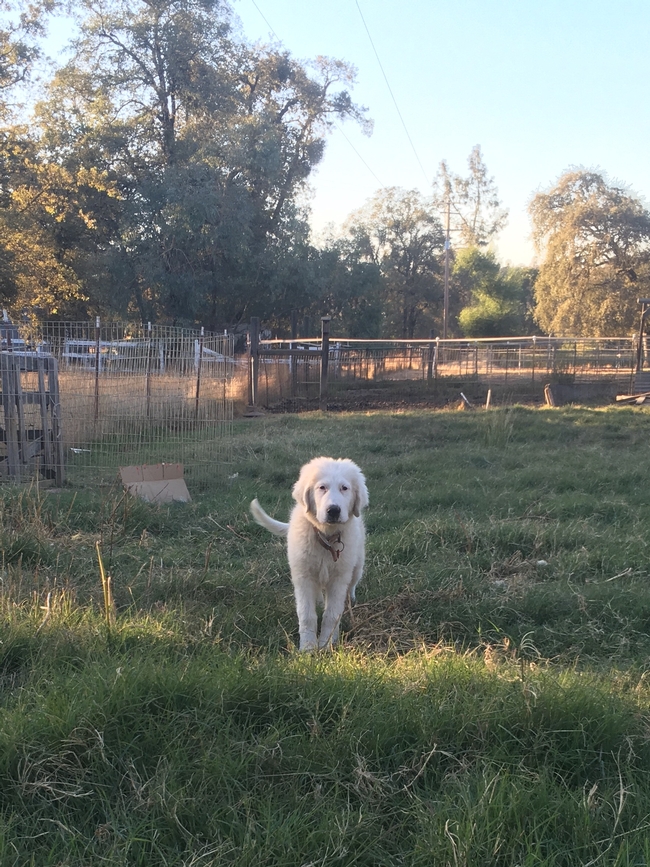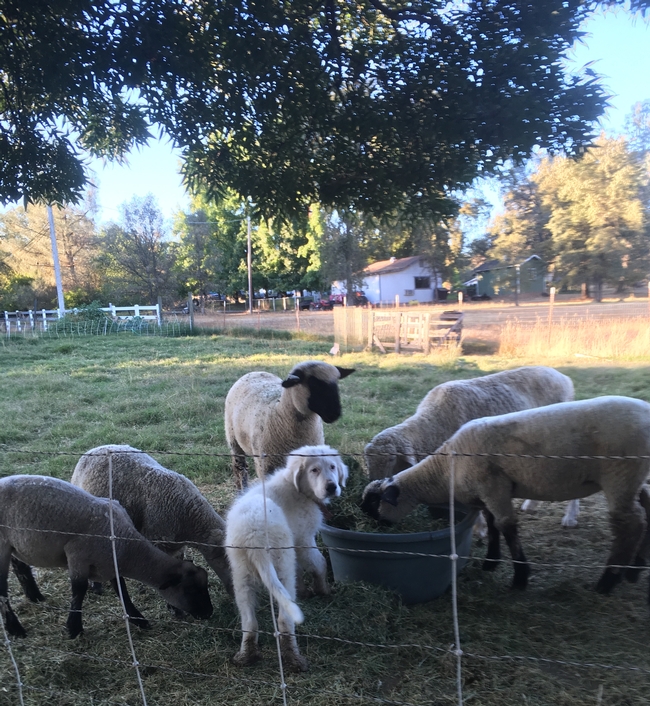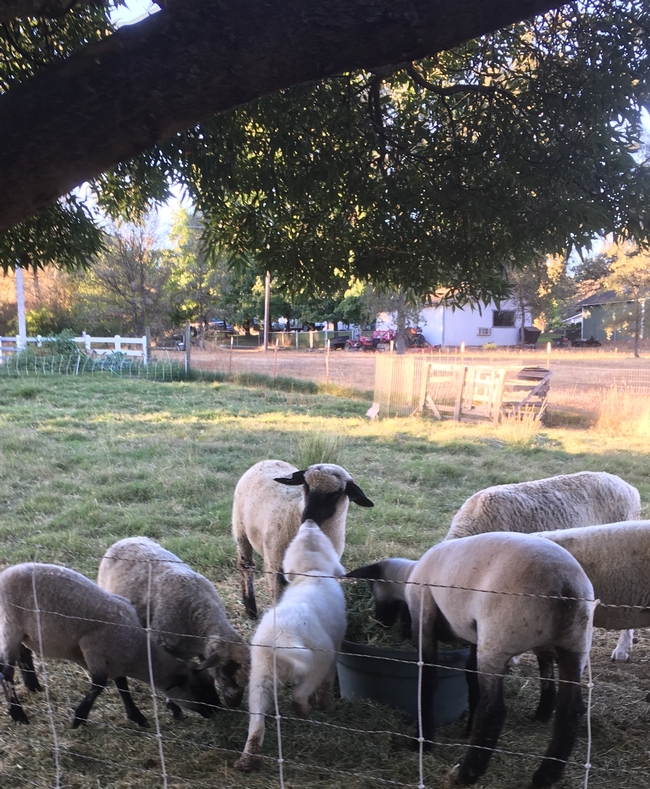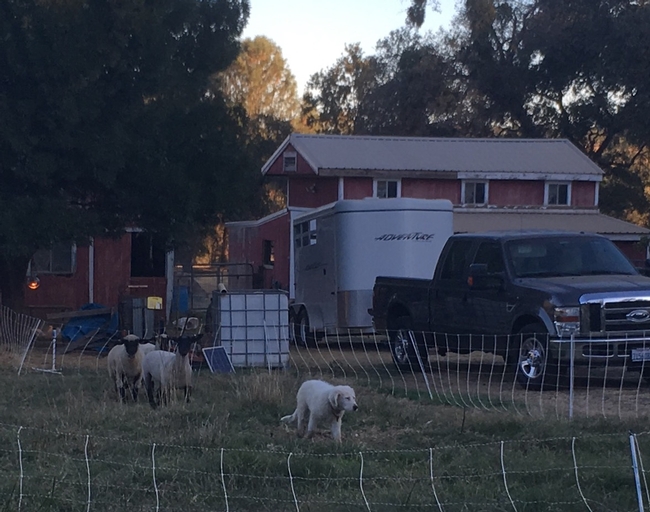
On Monday, we acquired Elko, a Pyrenees x Akbash pup, from Fred Groverman in Petaluma. With livestock guardian dogs, I'm less concerned with a specific breed (or combination of breeds) than I am with a pup's genetic and environmental background. I want a pup that comes from working parents, and I want a pup that was whelped and raised in close proximity to livestock. Elko meets both criteria.
There are two (at least) schools of thought about purchasing LGDs. Some producers (me included) prefer to purchase a pup at 8-12 weeks of age. In my experience, the period from 8-20 weeks of age is critical for forming social bonds between the dog and the livestock he/she will spend his/her life protecting. I think this phase is also critical for exposing the pup to our management system. Our dogs need to learn about electric fence. They need to learn that we move sheep (and dogs) frequently. They need to be comfortable with (but not bonded to) people. I'm still learning how to train these dogs; we've found that 30-40 percent of the puppies we start will work in our system. That said, I'm convinced that a dog works better when it's reared in the environment in which it will work. Other producers prefer to purchase older dogs that are ready to go to work - and there are dog breeders in the West that accommodate this demand. These older dogs are typically much more expensive - and usually guaranteed to work. Part of the cost of these older dogs, I think, is that the breeder assumes the risk that a particular dog won't work.
LGDs are capital expenses for a sheep or goat operation. In comparing the two systems I've outlined above, I think it makes sense to divide these costs into three categories: acquisition, development, and management. Acquisition costs include the cost of the pup and the expense involved in taking possession (mileage, usually). The development costs include veterinary and feed costs incurred up to the point where the shepherd decides the dog will fit the management system. Management costs are incurred from that point forward. I think these categories are useful for a couple of reasons. The actual cost of a working LGD should include both the acquisition costs and the development costs - and these are "stranded" costs when a dog doesn't work out. These are also the costs that are reflected in price of older dogs that are ready to go to work.
Our management costs are $500-600 per year per dog - this includes (primarily) feed and vet expenses. While Fred Groverman graciously gave Elko to us, I'm going to value our new pup as if we'd purchased him. Here are our acquisition and development costs to date:
|
Acquisition Costs |
|
|
Purchase Price |
$400.00 |
|
Mileage (230 miles RT @ $0.545/mile) |
$125.35 |
|
Total |
$525.35 |
|
Development Costs |
|
|
Dog Food |
$46.85 |
|
10-way Vaccine |
$13.99 |
|
Total (as of 9/24/17) |
$60.84 |
When I brought Elko home, we built a creep feeder for him (basically a pen in which he could eat without the sheep trying to steal his food). We exposed him to the electro-net we use to fence our sheep immediately - and he learned to avoid it immediately. We put him in a paddock with several ewe lambs and an older ewe to doesn't take any guff from any dog.
I've found that the sheep take some time to evaluate a new dog. For the first several days, the sheep avoided Elko. As of this morning (day 6), the sheep all seem to accept him. When I fed the sheep this morning, I observed the ewes following Elko to the fence. Later, I watched Elko licking the face of one of the ewe lambs - a sign of submission on Elko's part (and a sign of acceptance on the ewe lamb's part).


I'm hoping readers will ask questions and respond with their own observations of LGD development and behavior! This is the first of many posts, I'm sure!
